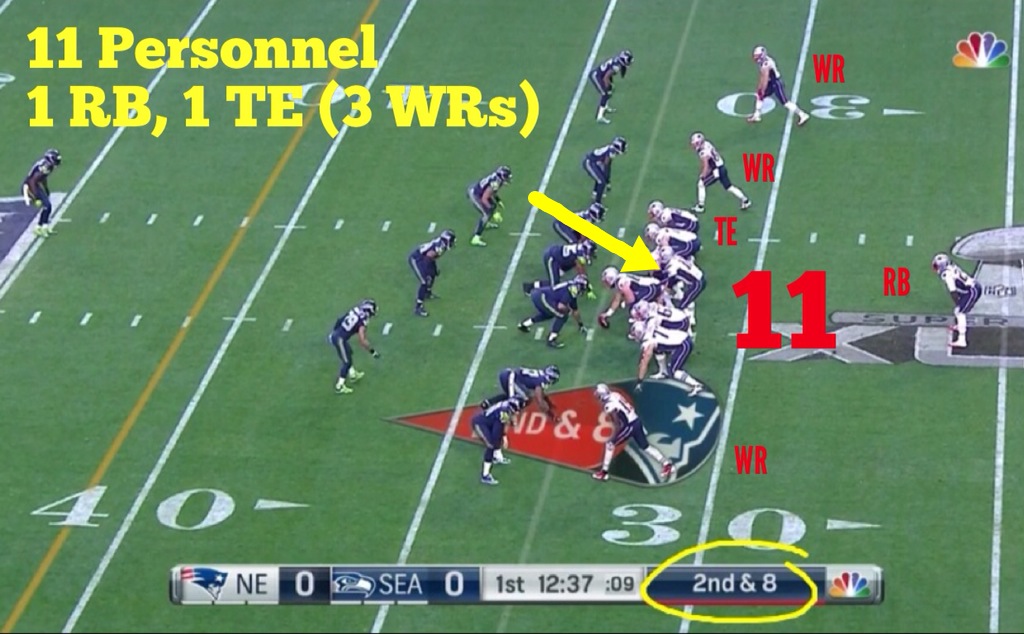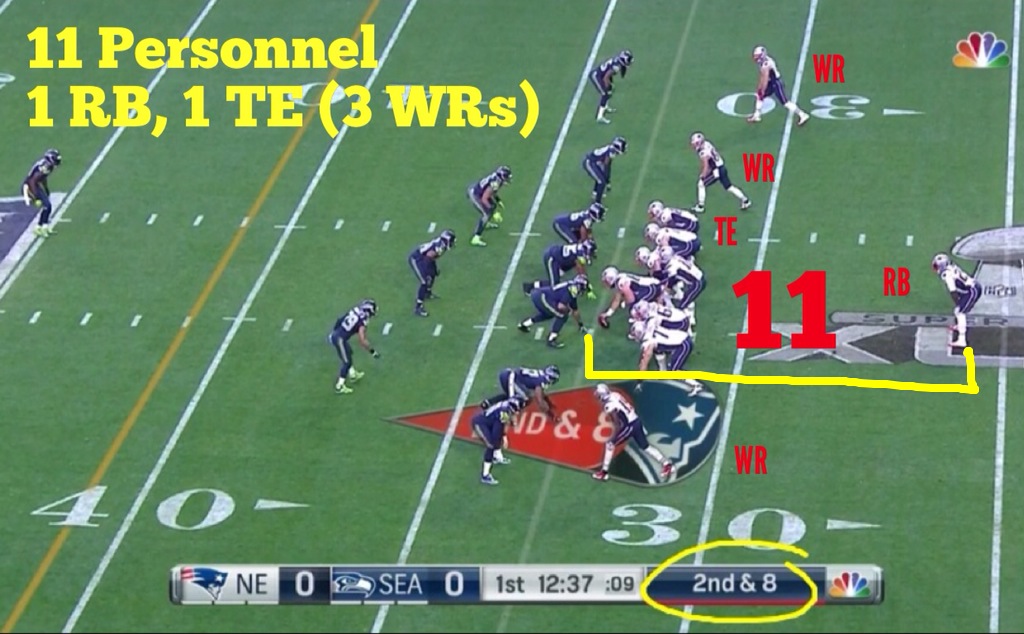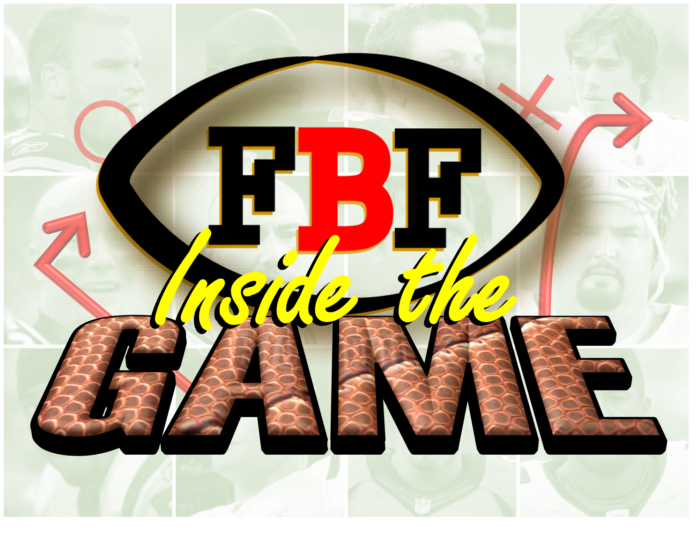Part 3 of 3: What Offensive Formation Cues Tell a Defense
The final installment in this FBF series delves into how a defensive player can leverage field information to discern offensive tendencies.
The linchpin of this insight lies in the formation – the most varied yet revealing aspect of the puzzle.
We’ve previously explored how down & distance (http://tinyurl.com/l5lwb4g) and personnel groups (http://tinyurl.com/mdzdn3z) lay the foundation for a solid defensive read on the offense’s strategy. However, it’s the formation that truly solidifies the player’s understanding of the field.
A prime example of a well-timed and subsequently renowned defensive read on an offensive tendency is Malcolm Butler’s game-sealing interception for the Patriots against the Seahawks in a recent Super Bowl.
As discussed in the preceding segments, down & distance and personnel grouping provided the initial information that Butler needed.
Yet, these alone can only take you so far. Butler could have deduced “pass” from D&D and the unconventional goal-line offensive personnel. However, the critical piece that enabled him to anticipate the play was discerned from the formation.
Swiftly processing a formation cue in the pivotal moment of the most significant game secured the Super Bowl victory for the Patriots.
This underscores why pre-snap cues are such a substantial (albeit discreet to the untrained eye) part of the dynamic in a football game.

When a team is in a goal-to-go situation from the 1-yard line, it’s typically a strong indication of a run play for most football teams.
However, when Seattle brought in their 11 personnel, it signaled to the defense that a run play was no longer on the table.
For players, goal-line plays are easier to read in terms of tendencies compared to plays out on the open field.
The playing area is much more confined, which means there are fewer possibilities for play calls. The challenge here is primarily physical rather than mental.
During practice week, players are provided with a filtered breakdown of tendencies, where after considering all three levels of information (D&D, personnel, and formation), a strong trend emerges.
It’s quite common for situations like goal line plays and critical conversion plays (“gotta have it”) to have a small enough sample of plays that a couple of clear tendencies will emerge if the right combination of D&D, personnel, and formation is presented.
This is where the concept of an offensive coordinator’s “fingerprint” comes into play. When they’re in a high-pressure situation…
What decisions do they make? And do they structure their plays in a way that gives away their intentions?
Numerous tips can be gleaned from formations on a play-to-play basis, enough to fill several columns like this one.
However, for the focus of this piece, we’ll zoom in on a couple of the more straightforward and prominent ones.
Returning to that 2nd and 8 Super Bowl play that we’ve been referencing throughout this series, the formation cues provided by New England illustrate how the third layer of information can be pivotal for defense in deciphering an offense.
Given the down and distance, we understand this is a situation where New England is looking to “get back on track,” and theoretically, this could narrow down the range of expectations from their offense to a much more manageable set of plays.
When they line up in 11 personnel, that set becomes even smaller. Within this reduced sample, there’s potential for a run/pass indication.
The screenshot below emphasizes quarterback Tom Brady under center.
This is a crucial distinction often highlighted in player tendency scouting reports.
In theory, a quarterback-under-center scenario might initially suggest a vital 11 personnel “get back on track” tip towards a “short pass” or “run” as the teams’ huddle.
However, once they line up, the likelihood tilts heavily towards a run.
For instance, a team might be a 62% running team in “get back on track” (GBOT) situations, a 78% passing team in the same scenario with an 11 personnel alignment, but a 74% running team under these same conditions when the quarterback is under center.

If a player on the field is only focused on one or two conditions, they could easily be led in the wrong direction.
A single misjudgment at the start of a play based on misreading the offense could result in them being beaten right from the outset.
This is why general offensive statistics in football hold little weight for a defense. It’s all about filtering. If you don’t rigorously filter, you’re out of luck. You might hear on a broadcast that an offense has a low conversion rate on 3rd down, but against what type of defense? And in what situations—3rd and short, long, or medium? Using which personnel groups?
The defense must have this information to strategize effectively.
Despite an overall poor 3rd down statistic, an offense might have a very high conversion rate, specifically from 3rd and medium, with a particular personnel group that works well against your team but wouldn’t be as effective in other matchups.
This underscores why comprehending all the information on the field is crucial.
Relying solely on one or two metrics without the layers of context is a recipe for error.
The following slide (below) presents another aspect of formation information that a defense can utilize to discern a pre-play tendency: running back depth.
Everything mentioned earlier, from the game situation to the personnel and the quarterback’s positioning under center can be counteracted if a running back lines up at an unusual depth behind the quarterback.
In the example provided, running back LeGarrette Blount is positioned deep (at 7+ yards), aligning with all the other cues that indicate this is likely to be a run play.
*Generally, running backs line up deeper (at 7 or more yards) for running plays, but some may inch forward to 6 yards or less on pass plays to reduce the distance between themselves and a pass rusher they need to block.

The depth of the running back can serve as a valuable tool for a defensive player on the field, as it has the potential to override all the other statistical information that may suggest a different outcome.
Had Seattle observed Blount lining up at a shallower depth, the linebackers could have signaled the front and secondary that a pass play was likely in the works.
Understanding that in this “get back on track” situation from this distance, the Patriots would likely opt for a short, quick-hitting route; this prompts the defensive lineman to raise their hands to disrupt the pass, knowing the ball will be released quickly.
Another crucial tool for anticipating an offensive play is observing the type of wide receiver motions that occur (as shown below).
In the case where the Seahawks’ defense was considering a quick-pass or run scenario, the combination of deep back depth and the swift, short motion left little doubt that a run play was imminent—and indeed, it unfolded as expected.

In this formation, the Patriots execute a fake jet-sweep play to Julian Edelman, aiming to potentially draw in a defender from the front who might follow Julian instead of maintaining their gap responsibility.
The ball is then handed off to Blount for a straightforward, direct run. Seattle effectively defends the play, limiting it to a moderate gain.
There are many motion types, too numerous to delve into here.
However, each often signifies something distinct, so a defensive player gains a significant advantage by studying motions and understanding how specific indications align with all the information we’ve discussed.
A particular motion occurring in an individual situation with a specific personnel group is the kind of sequence that can provide highly reliable statistical indicators—sometimes reaching 90% or more.
I recognize that even grasping the fundamental aspects of offensive tendencies can be overwhelming, which is why I attempted to dissect it into three separate columns.
The considerations a player makes throughout the practice week, both in study and on the field pre-snap, play a tremendously significant role in the outcomes witnessed on Sunday.
These nuances become second nature for players after encountering and rehearsing them thousands of times.
Going through the same mental process we’ve outlined here in the text is what unfolds out on the field at lightning speed.
At the very least, I hope you now have a deeper appreciation for the layers of information that come into play on every down in the NFL.
*Stay tuned as we’ll continue the “Inside the Game” series throughout the football offseason, exploring various topics.

